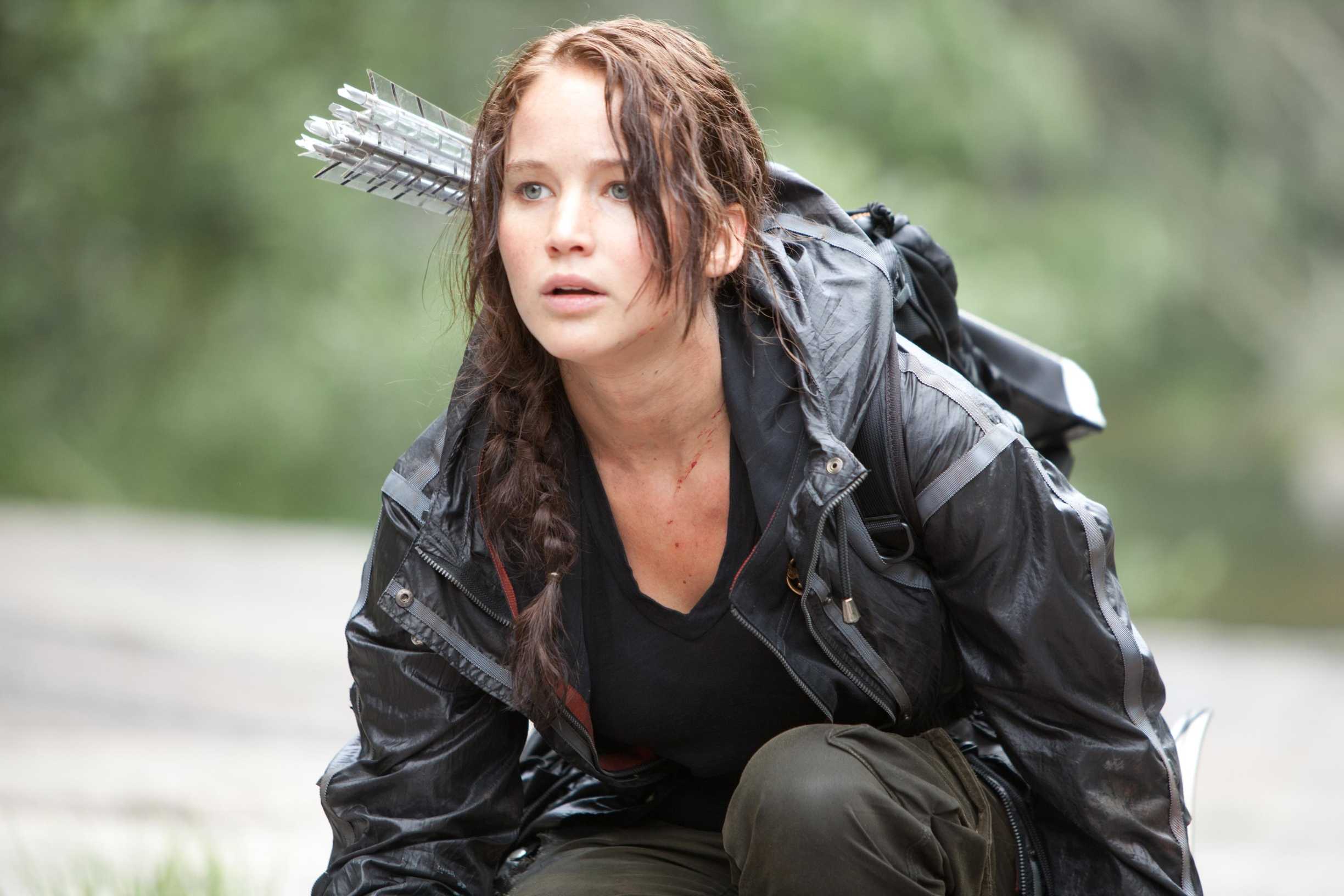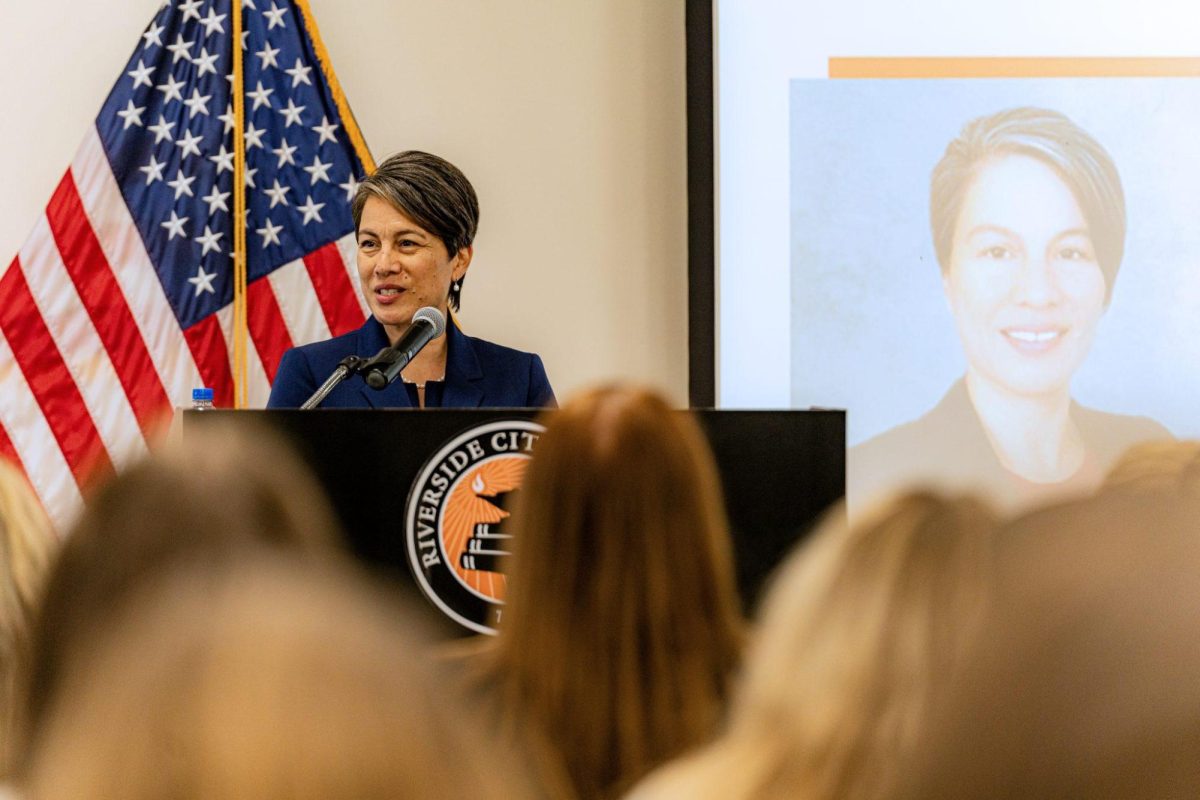By Courtney Coleman / Staff Writer

Against the odds (Lionsgate)
By Courtney Coleman / Staff Writer
The long anticipated film version of Suzanne Collins’ young adult series, “The Hunger Games” has finally hit theaters.
The franchise, on its way to becoming even more popular than the latest teenage rage “The Twilight Saga,” made $19 million at the box office just from the midnight premiere showings alone.
Set during the future, what was once North America is now called Panem, a cluster of districts run by District 1, also referred to simply as The Capitol.
Capitol leaders devised The Hunger Games, a contest in which two children, from each district, called tributes, are forced to battle to the death in an arena, while humanity watches on live television, to remind the districts who is boss and prevent future uprisings.
Gary Ross (“Seabiscuit” and “Pleasantville”) directed and co-wrote the film adaption of Collins’ famed trilogy; a challenge that was executed brilliantly. He manages to veer from sci-fi clichés while still depicting a believable, though dark, future.
A combination of expertly shot scenes, extravagant costuming, an unorthodox musical score and superb acting help bring “The Hunger Games” to life.
Katniss Everdeen, the book’s heroine, is played by Jennifer Lawrence, also known for playing another steadfast character in “Winter’s Bone.” Lawrence portrays confidence and strength in her character while still making Katniss relatable to the audience.
Without reading the books ,one might mistake Lawrence’s occasional lack of expression as bad acting.
Considering Katniss’ original character is meant to come across as stoic (most of the character’s emotions taking place internally), Lawrence did a fine job.
Josh Hutcherson on the other hand, who plays the part of Peeta, had his mouth agape in nearly every scene as if he would break out into a smile at any moment. That or he would look dumb-founded and confused, unlike his strong and extremely intelligent character.
The film makes the disturbing concept of “The Hunger Games” a reality from the start using a shaky camera and quick shots to keep audiences on edge up until the “reaping,” the event where the tributes are selected. Ross made sure the audience saw in a wide shot the hundreds of innocent children shuffle through the poor and rundown District 12 to the reaping – a scene eerily similar to holocaust depictions. The sight reminds the audience that this is not a happy movie.
The rest of the film keeps a steady, yet fast pace which takes viewers from the meager District 12, to the technologically advanced Capitol, and finally to a forested battle arena where the audience watches painfully as the story’s characters come to terms with the horror of the games.
Inevitably, Ross had to pick and choose which material to take from the book and what to leave out. In the book, a lot of the story’s crucial elements are explained through Katniss’ thoughts. Knowing that approach wouldn’t work onscreen, Ross skillfully explains loose ends by often reverting to the point of view of Capitol residents discussing the games as they watch on television.
“Hunger” fans were prepared to critique Ross’ film harshly if it didn’t live up to the book’s hype. Fortunately it did, not only as an adaption, but film critics were also pleased at how well made the 2 1/2 hour long movie ended up being.
Some critics complain that the movie is a disturbing account of teens, bloodily ending one another’s lives, but it’s more than that. Viewers can compare the grievances of the movie to real life misfortune. “The Hunger Games'” focus is more so about struggling to live in a cruel and unfair world. It’s the story of the unlikely rising up against injustice no matter the cost.
Ross knew what he was doing when it came to piecing together a movie that highlights hardship and triumph, while at the same time keeping the movie entertaining for first time viewers and “Hunger” fans alike.






